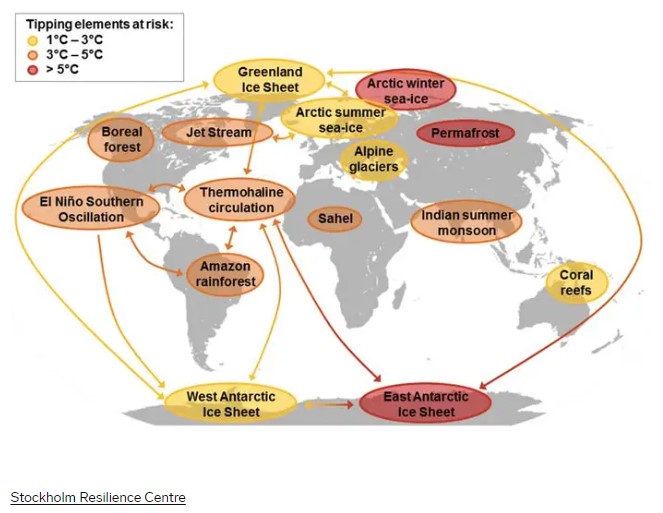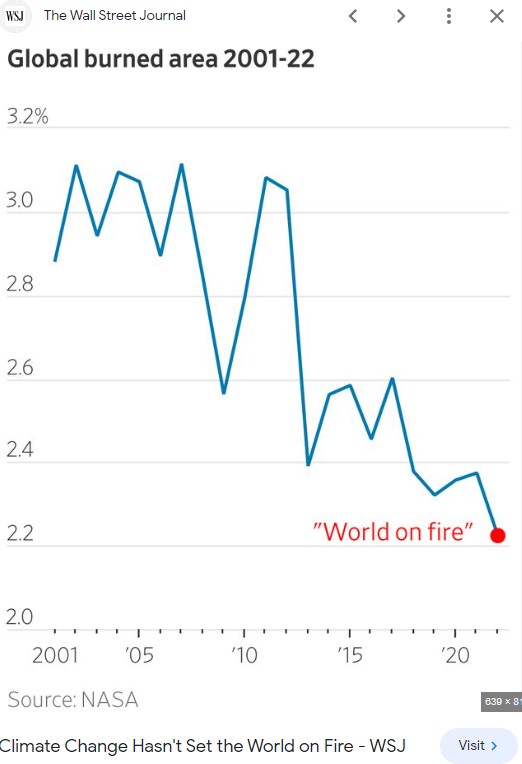OPINION
We got as far as 2014 in the previous article and in 2015 the Environmental Defense Fund told us about six climate tipping points that scientists were worried about.

1. The Arctic sea ice melts.
The melting of the Arctic summer ice is considered to be the single greatest threat, and some scientists think we’ve already passed the tipping point.
EDF
2012 was the record lowest Arctic sea ice and no year since 2015 has beaten the 2012 record low. So much for passing this tipping point.

2. Greenland becomes ice free.
The commentary here was:
The warming of the Arctic may also render Greenland largely ice-free. While Greenland’s ice loss will likely reach the point of no return within this century, the full transition will take at least a few hundred years.
Yeah: well, wake me when it happens!
3. The West Antarctic ice sheet disintegrates.
Scientists expect the West Antarctic ice sheet to “tip” this century, and there is evidence that it already began happening in 2014.
However, the entire collapse of the glacier, which would raise sea level by 16 feet, could take a few hundred years.
Curious that the tipping ‘already began’ in 2014 when a 2023 paper found that the West Antarctic Ice Sheet has been cooling, not melting or disintegrating, for the 20 years ending 2018. The data show 2ºC of cooling.
The time series of running 20-yr and the time-varying trends of annual mean SAT [surface air temperature] at Byrd Station exhibit sustainable cooling from the early 1990s onward. In particular, the epoch from 1999 to 2018 experienced the largest 20-yr box window decrease of the annual mean SAT, at a rate of -0.93°C per decade. The seasonal mean SAT also decreased for the same time interval (1999–2018) The spring cooling was strongest at about twice the annual mean trend (-1.84°C per decade), and winter ranked second strongest (-1.19°C per decade), with the very weak cooling in autumn and summer.
Paper
(Tipping points 4, 5 and 6 weren’t worth a mention.)
By 2018 things were getting really serious in the tipping-point world.

They joined up all the tipping points into a lovely global disaster map.

Since the 1ºC–3ºC items have already been covered and mostly debunked now, we are probably fairly safe, especially when their text is littered with qualifiers.
Each of these changes would cause rippling effects that could further warm the world.
Take, for example, the melting and collapse of the Greenland ice sheet. If this were to happen, it could alter a major ocean current: the Atlantic Meridional Ocean Circulation. That in turn could cause sea-level rise (as would the ice sheet loss) and lead heat to build up in the Southern Ocean. Warmer waters, then, would accelerate ice loss in the Antarctic and create a feedback cycle of warming.
The authors emphasize that we don’t know when these other processes would be triggered.
Business Insider
Forest fires were the next big thing to hit the headlines and in 2020 Yale declared we had hit a tipping point.

Not so fast countered the Wall Street Journal in 2023.

And they had the temerity to back it up with figures from NASA.

Like all good climate alarm predictions, if they have a ‘will happen by’ date and that date has now passed, they will be shown to be wrong. Consequently, tipping point dates are generally so far in the future that the alarmists can get away with all the ‘coulds’ and ‘mights’ and ‘likelys’ that sprinkle their gloomy doom prognostications knowing that they will be dead and gone when their predictions ultimately fail.

